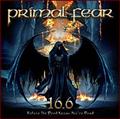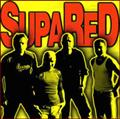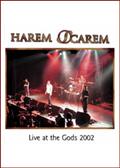CLAWFINGER (se) - Use Your Brain (1995)

Label : MVG Records / Warner Music
Sortie du Scud : 23 mars 1995
Pays : Suède
Genre : Crossover
Type : Album
Playtime : 12 Titres - 44 Mins
Après un Deaf Dumb Blind qui fit parler d’eux, et surtout des concerts mémorables qui imprimèrent leur nom et leurs trombines dans la tête des gens, CLAWFINGER revient avec un deuxième album au titre provocateur : Use Your Brain. Ont-ils l’impression que l’humain n’utilise pas sa matière grise ? Ou à mauvais escient ?
Rapidement, on se rend compte que la formule utilisée pour le premier disque est la même : des riffs simples, des rythmiques bien senties, syncopées à souhait, un chant rappé empli de puissance et des samples, eux aussi simples, mais qui arrivent parfaitement là où ils doivent être et entraînent le reste de la musique à leur suite. On pourrait se dire alors que CLAWFINGER est un groupe qui ne sait pas se renouveler. Seulement, même recette ne veut pas forcément dire même résultat final. Et, dés le début, on sent quand même quelque chose de différent.
L’ambiance est beaucoup plus sombre, les titres beaucoup plus dans les mêmes couleurs. La variété qui était présente sur Deaf Dumb Blind semble un peu oubliée, du moins dans les premiers morceaux. Mais ce n’est qu’une première impression, parce que malgré un semblant de monotonie recherchée, on a quand même un énorme travail derrière. Le son des guitares est encore plus gros, la production étant meilleure, mais il se rapproche plus d’un son électronique, composite, même si c’est bien un effet distordant que l’on sent en premier. Les samples deviennent beaucoup plus grinçant, métalliques, sur des titres comme « Pin Me Down ». Même l’ambiance du sixième morceau (« It ») plus électronique dans les bases (il prend la place de « Catch Me » de DDB) a cette couleur noire et lancinante qui met mal à l’aise. Parce qu’au final, c’est ça qui dérange le plus, par rapport à leur premier album : ça fout les boules là où on avait seulement l’impression d’une revendication rageuse. La revendication est toujours autant présente (« What Are You Afraid Of », « Power » ou encore « Pay The Bill »), mais cette atmosphère moite et rude n’existait pas auparavant. On peut noter quand même une amélioration dans la manière de poser les mots de Zach. Il se sent plus à l’aise. Et une palme spéciale pour le chant de « Undone », où l’arrivée de Freddie Wadling dans les couplets apporte un côté écorché pas déplaisant.
Même si on est surpris par la tournure que prend le style de Use Your Brain, il n’en reste pas moins du CLAWFINGER. Et des titres comme « Do What I Say » nous le prouve, en plus d’être un véritable hymne. Moins spontané, mieux produit, Use Your Brain est quand même un très bon album qui fait mal où il passe et qui plaque contre le mur celui qui l’écoute.
Ajouté : Lundi 04 Décembre 2006
Chroniqueur : Wong Li
Score :    
Lien en relation: Clawfinger Website
Hits: 18273
|














